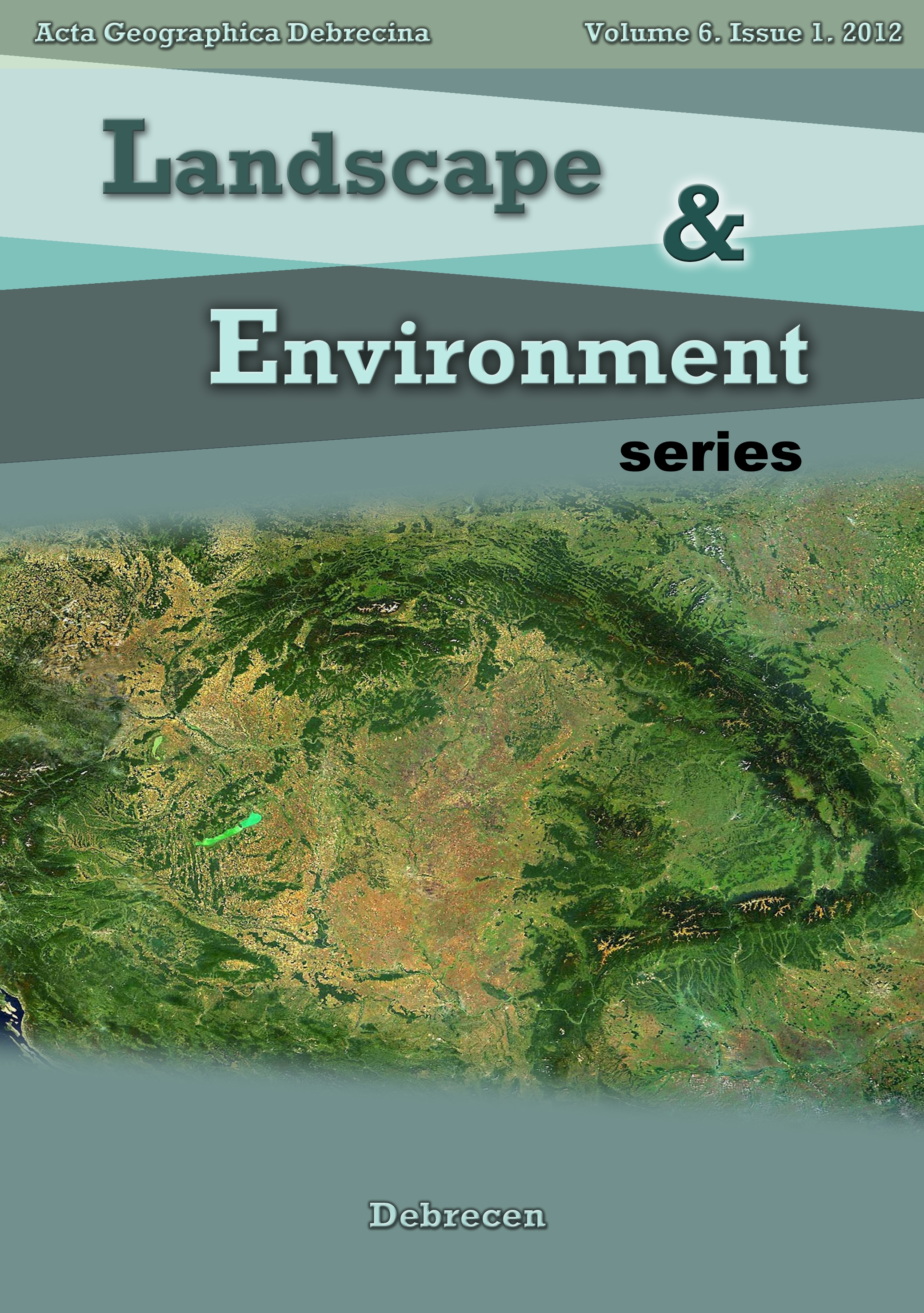Vol. 6 No. 1 (2012)
Gourabi, B.R. - Palic, M. Recognition of monthly bioclimatic comfort with Tourism Climatic Index in Ramsar, Southwest of Caspian Sea, Iran
Keresztúri, Á. Geomorphologic analysis of drainage networks on Mars
Malik, Z.H. - Malik, N.Z. High altitude forest composition diversity and its component in a part of Ganga Chotti and Bedori Hills District Bagh, Azad Jammu and Kashmir, Pakistan
Csorba, P. - Mezösi, G. - Szépszó, G. - Blanka, V. - Meyer, B.C. - Vass, R. Analysis of landscape geographic impacts of potential climate change in Hungary
##issue.tableOfContents##
Articles
-
Recognition of monthly bioclimatic comfort with Tourism Climatic Index in Ramsar, Southwest of Caspian Sea, Iran
1-14Views:183Weather and climate have great importance in developing of tourism industry. Most of the tourists use the climate information for travelling and choice of destination. Knowledge of climate information and its application can assist tourism planning, tourism industries and in reducing negative effects of weather and climate on tourists and this branch of the economy. The aim of this research is recognition of suitable months in Ramsar station on the basis of Becker method and tourism climate index (TCI), for a period of 25 years (1981-2005).The results of Becker method has shown that Ramsar station has a bioclimatic comfort in 10 months. Weather in 7 months (March, April, May, September, October, November, and December) is moderate and desirable. June, July, and August have a little warm and tolerate weather, but in January and February, Ramsar station has a cool weather with moderate stimulation. Evaluation of TCI index for Ramsar station has shown that May month has the best climate conditions with 80-89 range (Excellent) for tourism activities. June and October months have a "very good" climate conditions. April, July, and September are included in the "good" category while August and November are included in the "acceptable" category. January, February, March, and December have the "unfavorable" conditions.
pdf154 -
Geomorphologic analysis of drainage networks on Mars
15-30Views:133Altogether 327 valleys and their 314 cross-sectional profiles were analyzed on Mars, including width, depth, length, eroded volume, drainage and spatial density, as well as the network structure. According to this systematic analysis, five possible drainage network types were identified such as (a) small valleys, (b) integrated small valleys, (c) individual, medium-sized valleys, (d) unconfined, anastomosing outflow valleys, and (e) confined outflow valleys. Measuring their various morphometric parameters, these five networks differ from each other in terms of parameters of the eroded volume, drainage density and depth values. This classification is more detailed than those described in the literature previously and correlated to several numerical parameters for the first time. These different types were probably formed during different periods of the evolution of Mars, and sprung from differently localized water sources, and they could be correlated to similar fluvial network types from the Earth.
pdf89 -
High altitude forest composition diversity and its component in a part of Ganga Chotti and Bedori Hills District Bagh, Azad Jammu and Kashmir, Pakistan
31-40Views:206The effect of altitude on species diversity and its components was recorded in Ganga Chotti and Bedori Hills District Bagh Azad Jammu and Kashmir during 1999-2000. There were 30 plant communities merged in to four plant associations on the basis of cluster analysis. The highest average species diversity was 2.70 at the base (Alt1700 m) in woodland temperate association. Then the diversity declined. At the top (Altitude 3000 m) species diversity was 1.71, while in monsoon diversity was 2.48 at the base and 1.72 at the top. Average species richness was highest at the base (4.06) then decreased with the increase in altitude. Equitability increases from 1700-3350 m (0.71- 1.07) while at the top it decreases (0.77). Species maturity in winter and monsoon was highest at the base and lowest at the top (3000 m).
pdf157 -
Analysis of landscape geographic impacts of potential climate change in Hungary
41-50Views:238Change of climate can be a remarkable turning point in the 21st century history of mankind. An important task of landscape geographic research is forecasting environmental, nature protection, land use demands and helping mitigation of disadvantageous processes from the aspect of society. ALADIN and REMO numeric climate models predict strong warming and lack of summer precipitation for the area of Hungary for the period between 2021 and 2100. There is a predicted growth in frequency of extreme weather events (heat waves, droughts hailstorms). Changes have been forecasted using data presented in table 1. For analyses of complex landscape geographic impacts of climate change the area of Hungary have been divided into 18 mesoregions with 5.000-10.000 km2 area each (figure 1). The main aspect of choosing the regions was that they should have homogeneous physical, geographic and land use endowments and, for this reason, they should react to climate change the same way. Relationships between landscape forming factors and meteorological elements examined by us have been taken into consideration. Results of analyses of impacts of the meteorological factors on the changes of relief through the mass movements are presented in this paper. Changes of landscape sensibility of mesoregions to mass movements have been presented in the last chapter for the periods between 2021-2050 and 2071-2100 according to numeric climate models.
pdf110
